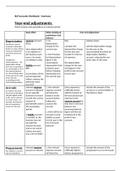Summary
LPC 2021 - BLP Accounts [SUMMARY]
- Module
- Business Law and Practice
Complete, concise and easy-to-understand summary of BLP Accounts. Exam taken in 2019. HIgh Distinction obtained for BLP and across all core and elective modules. Notes have been revised post-exam to ensure accuracy.
[Show more]



